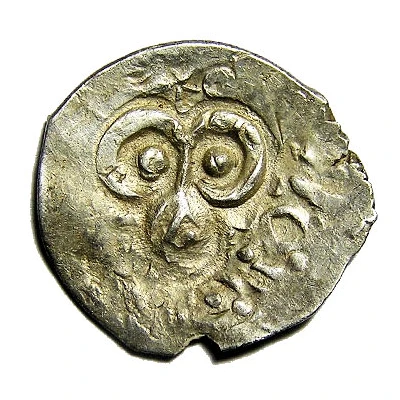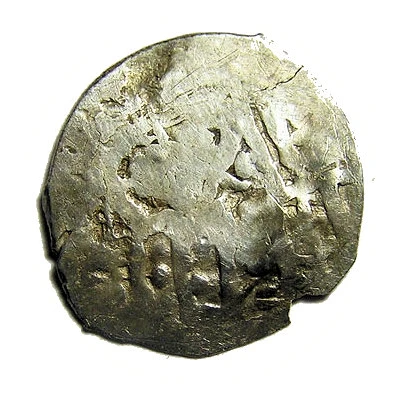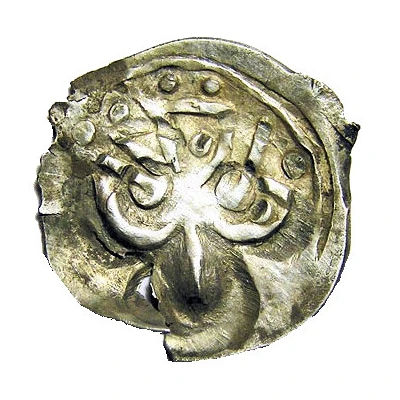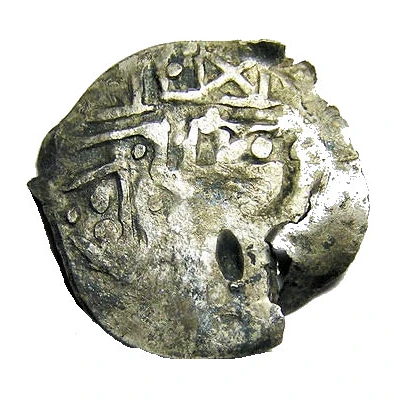
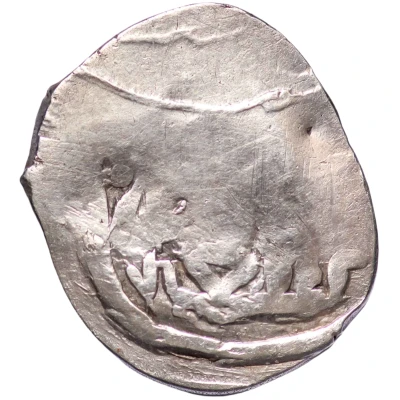

© Grinya (CC BY-NC-SA)
Denga - Fyodor Olgovich ND
| Silver | 1.2 g | 16 mm |
| Issuer | Grand principality of Ryazan (Rus Principalities) |
|---|---|
| Grand Prince | Fyodor II (Фёдор Ольгович) (1402-1427) |
| Type | Standard circulation coin |
| Years | 1402-1427 |
| Value | 1 Denga (0.005) |
| Currency | Denga |
| Composition | Silver |
| Weight | 1.2 g |
| Diameter | 16 mm |
| Shape | Round (irregular) |
| Technique | Hammered, Countermarked |
| Orientation | Variable alignment ↺ |
| Demonetized | Yes |
| Updated | 2024-10-07 |
| Numista | N#389650 |
|---|---|
| Rarity index | 97% |
Reverse
The remains of the inscription imitative.
Comment
Countermarks which are traditionally attributed to Fyodor Olgovich (Olegovich) are more uniform (Group I). These coins are easily recognizable and show a large or a very large countermarked tamgha. The weight of these coins slowly declined.
Average weight 0.92-1.35
Interesting fact
One interesting fact about the Denga coin is that it was used as a form of currency in the Grand Principality of Ryazan, which was a medieval state that existed in the 14th and 15th centuries in the territory of modern-day Russia. The coin was made of silver and weighed 1.2 grams, which was a significant amount for a coin at that time. The fact that it was used in the Grand Principality of Ryazan suggests that the region had a developed economy and trade system, and the use of a standardized currency like the Denga coin would have facilitated transactions and commerce.
